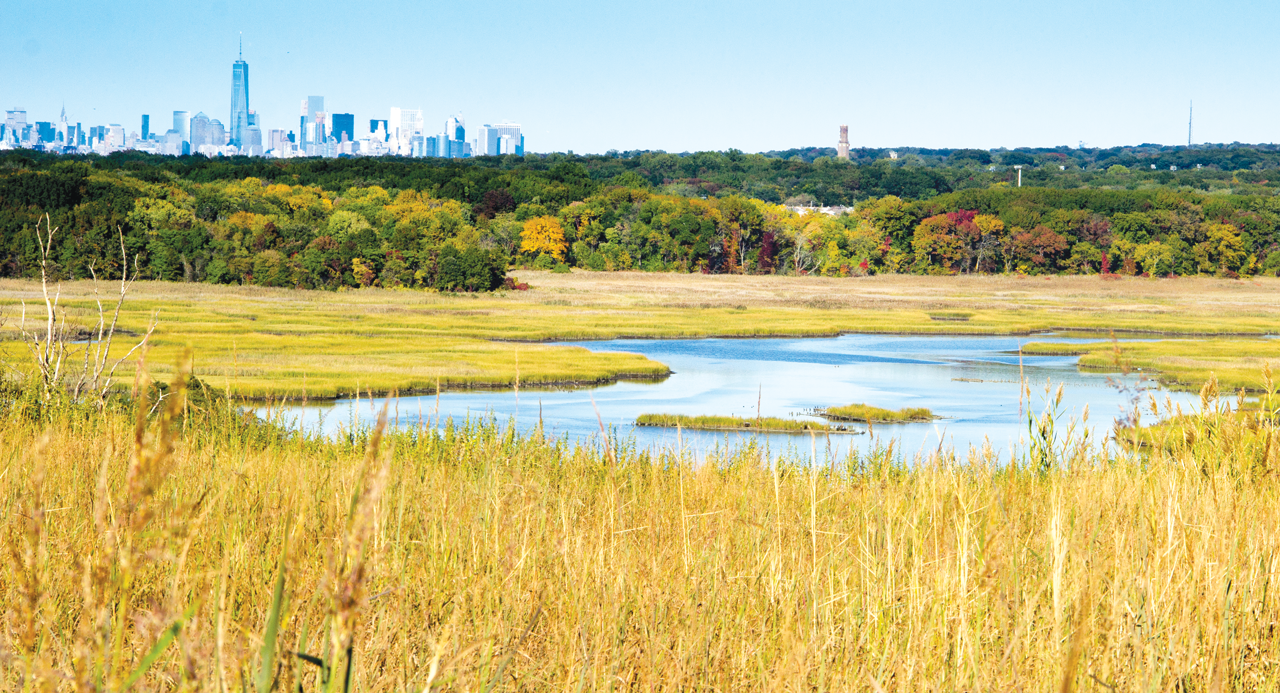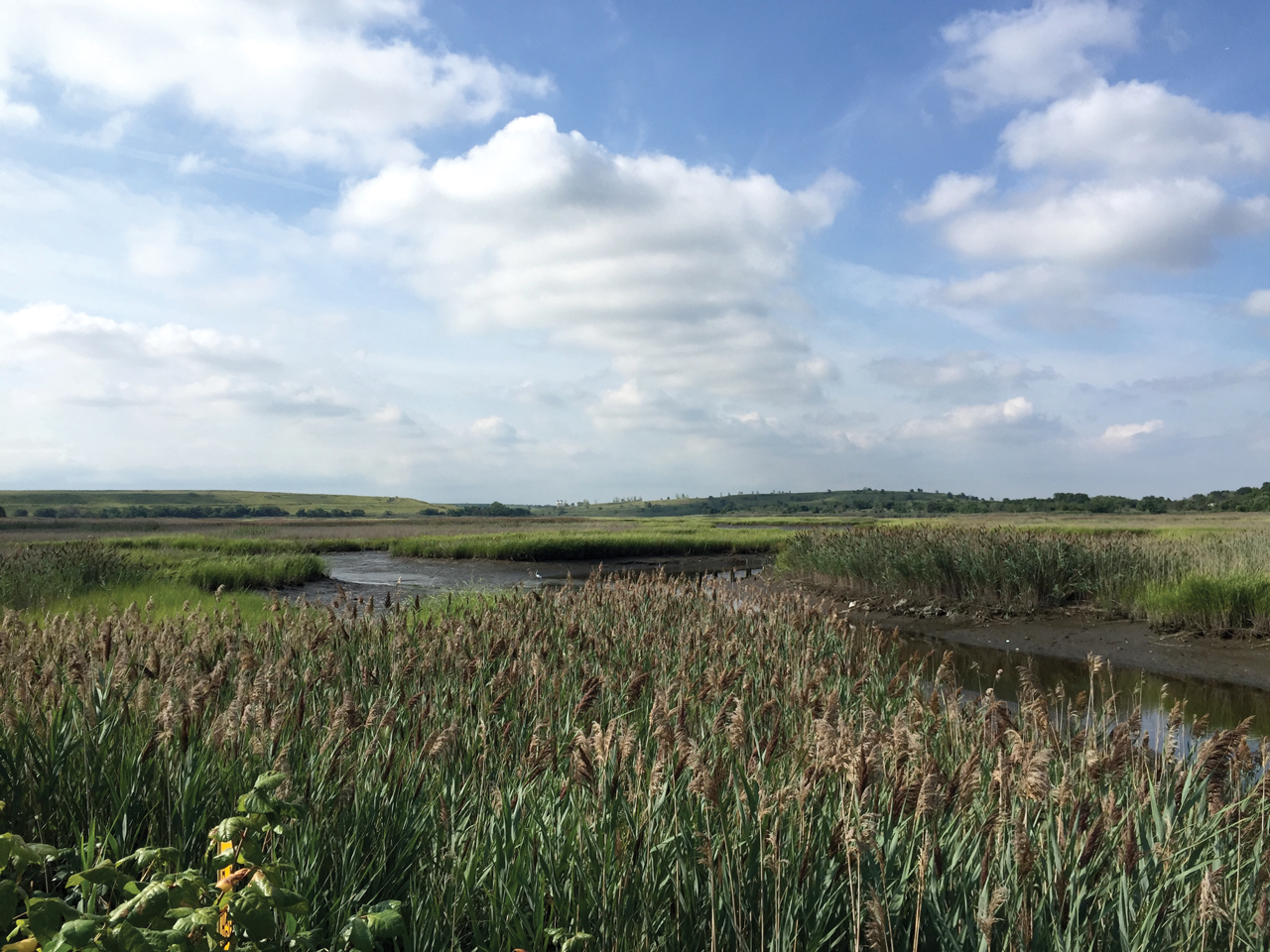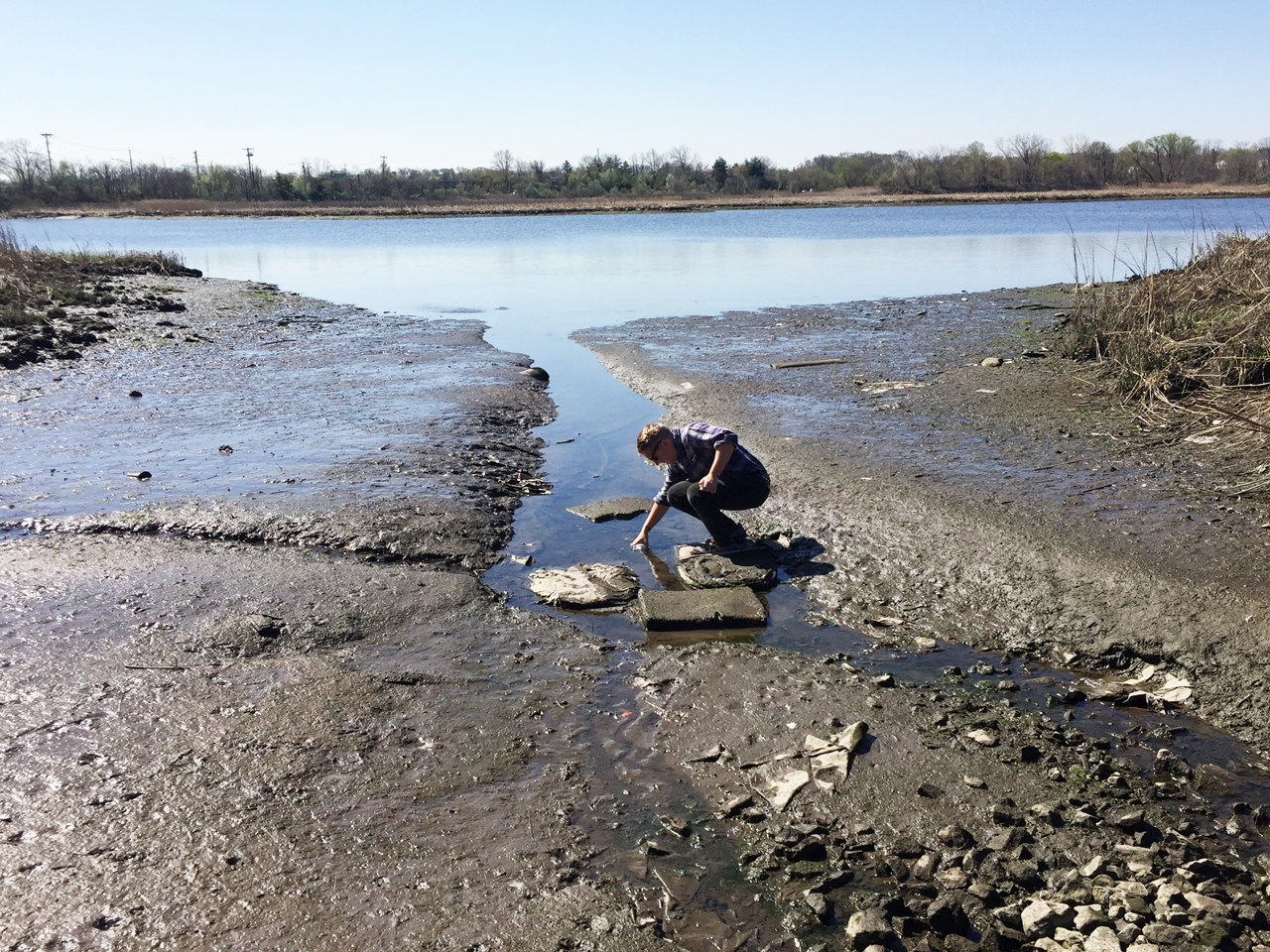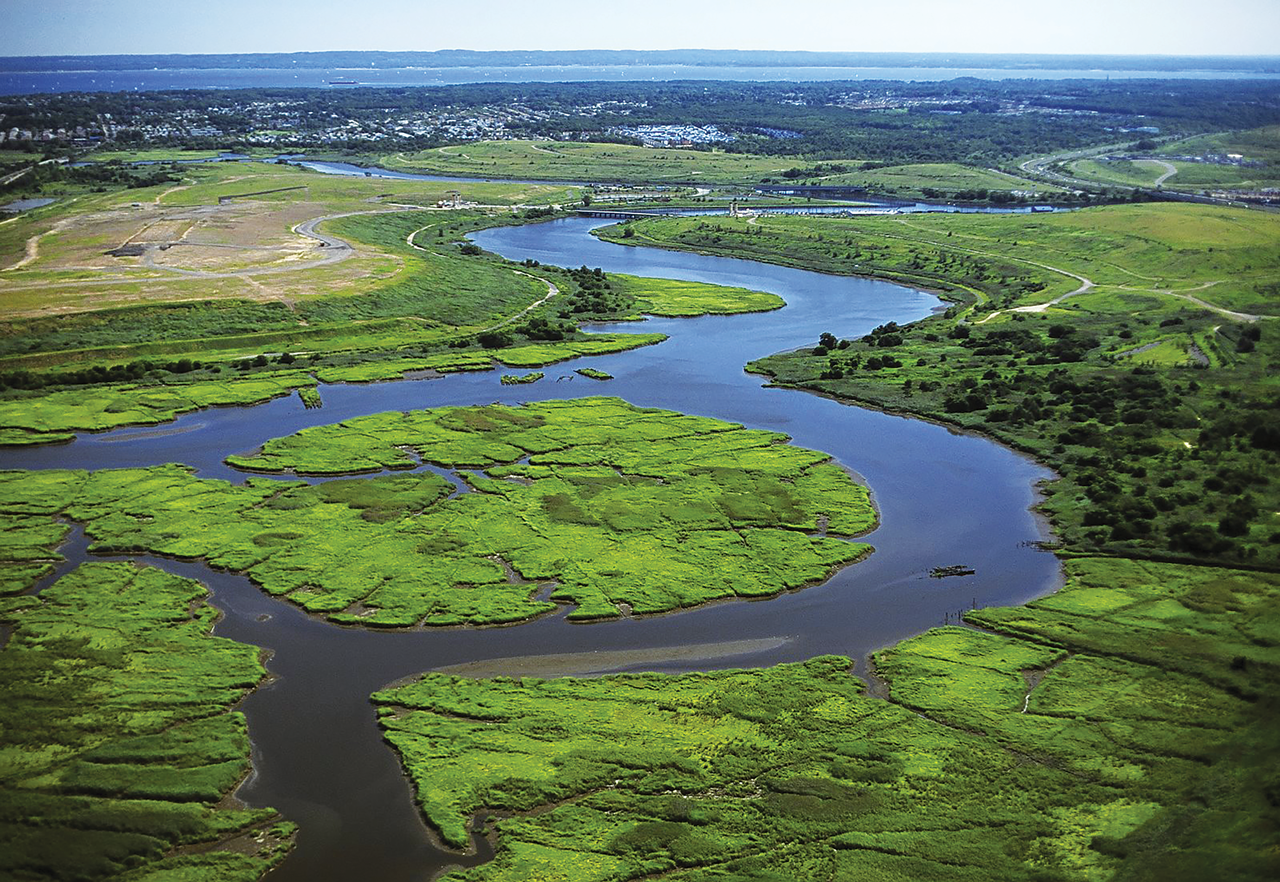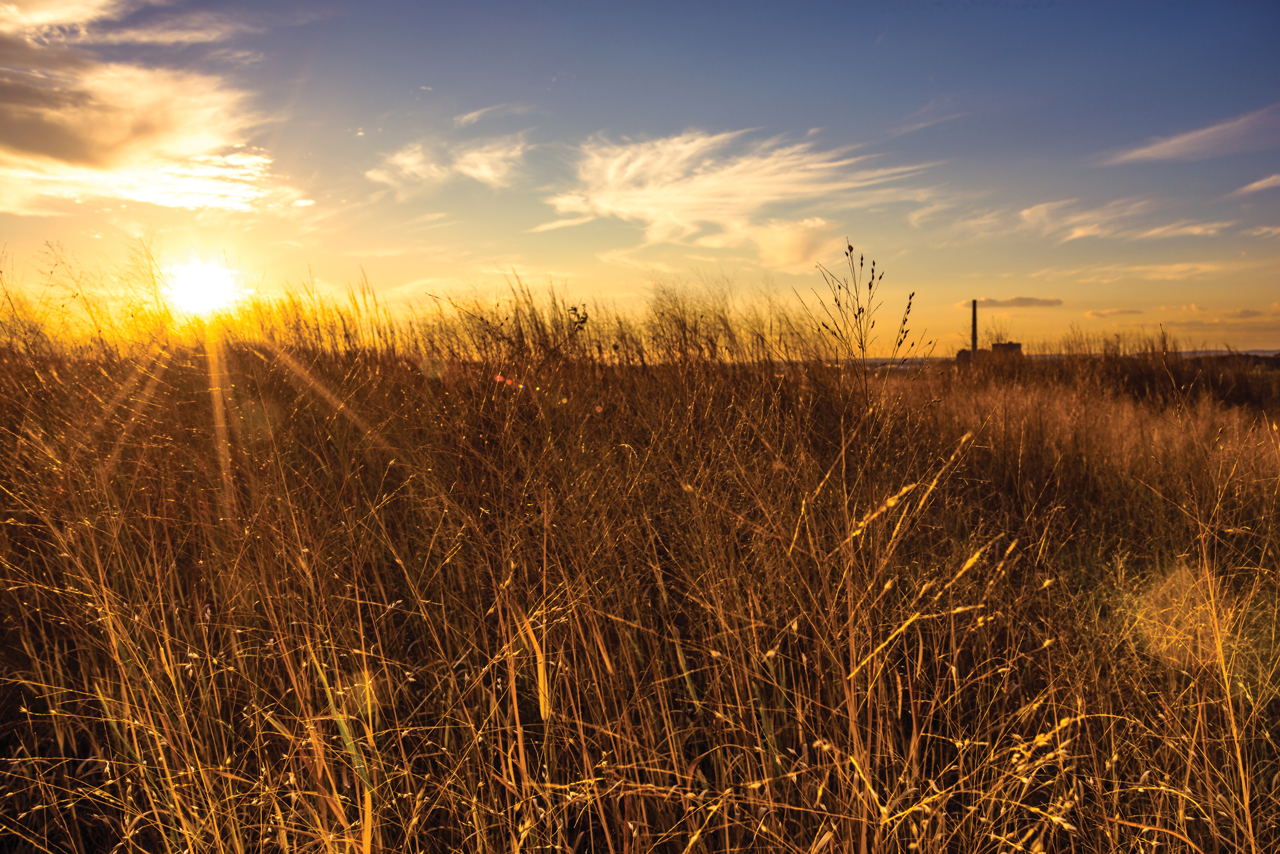When the Dutch arrived in New York Harbor in 1609, Staten Island—or Staaten Eylandt, as they named it—was a wild wonderland, woodland in the middle and tidal salt marsh on the edges, populated by the local Lenape tribe, plus an embarrassment of natural riches: eels, bluefish, bitterns, herons, muskrats, ducks, clams, crabs, wild turkeys, porpoises, and more. Jutting midway into the island from the west coast, like a hook in the island’s side, was the Fresh Kills estuary, a tidal wetland thriving with plants and critters, created by the retreat of the Wisconsin Ice Sheet some 17,000 years ago.
After World War II, the bursting city of New York found itself with a trash problem. In 1948, the city started officially dumping its trash into the marshes and waters of Fresh Kills. What became America’s first landfill was meant to be temporary, but it stuck. By 1955, it was the biggest landfill in the world—indeed, at 2,700 acres, it was the biggest human-made structure in the world. By 1991, the landfill contained 150 million tons of tightly packed garbage in more volume than could fill the Great Wall of China. Fresh Kills was wetland no more.
The landfill serviced New York City for 53 years, until Staten Island residents, sick of the stench, sued the city to close it. “The Dump,” as it was un-fondly known, was finally closed in 2001 (New York’s garbage is now processed and shipped to neighboring states)—but not until 1.2 million more tons of trash were added: the charred remains of the World Trade Center.
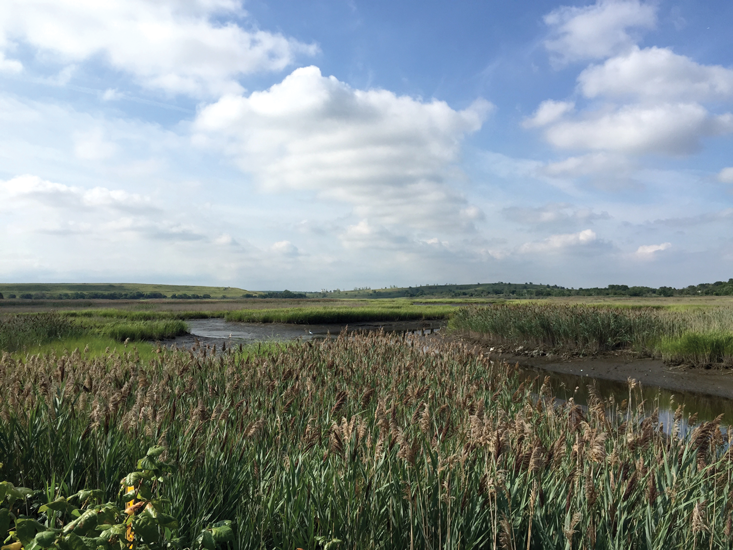
During its closure, the Municipal Arts Society, a civic group led by a mix of urban planners and preservationists, spotted an opportunity for building something rare in New York City, where nearly every last square inch is developed—the creation of an expansive new park, 2,200 acres to be exact, three times larger than Central Park. In 2003, Freshkills (now one word) Park was born.
Transforming a mountain of garbage into a “lifescape,” as a 2006 master draft plan describes the park, is no simple task. The park will be another 20 years in the making; the Parks Department hopes to open the first phases in 2019. But it’s also an extraordinary ecological project that poses a question at the heart of modern conservation: Can ecologists build a new ecosystem that will survive? What should their scientific North Star be?
We’ve plopped down this non-native ecosystem, right in the middle of New York City.
On an unseasonably bright and balmy day in February, Cait Field, Freshkills Park Manager for Science and Research Development, drove into the park past a Coca-Cola bottling plant, an enormous dump station, and innumerable rusty fences. The landscape was dominated by four rolling hills created from trash mounds, sealed with an impermeable geotextile and covered with dirt and grass to prevent erosion. A network of creeks and tidal straits ran between the hills, punctuated by small pockets of woodland. Gold and green grass rippled across the site. In the hazy distance was the silver skyline of Manhattan.
“This is not the native ecosystem,” said Field, a laconic and thoughtful 34-year-old with a Ph.D. in biopsychology and behavioral neuroscience. “There’s million of tons of waste in there, so it’s never going to be tidal marsh. We’re past that. We’ve plopped down this non-native ecosystem, right in the middle of New York City. It’s completely manufactured. Completely manufactured to start, anyway.”
Two winsome white-tailed deer sprang by. To Field the deer are a pest, which, like the Phragmites australis, a tall, feathery reed, have proliferated with abandon across the East Coast, dominating ecosystems and flattening diversity. “Over the past couple hundred years, humans have taken out any predators for the deer,” she said. “And we’ve ended up with an ecosystem that’s off balance.”
A few minutes later, she corrected herself. “I don’t know if it’s balance. We’re not restoring to something that was balanced, nor can we, because this is a completely different set of conditions than it used to be.”
Since the birth of ecology 100 years ago, the idea of a balance of nature dominated the field. Ecologists long believed ecosystems maintained an intrinsic equilibrium, to which they could return even after a great disturbance. The idea of a balance in nature is, after all, deeply intuitive. Our Earth seems to be balanced on the most precarious of tightropes: just the right distance from the sun, not too hot and not too cold, tilted on its axis just so. Inside Earth’s membrane, life self-regulates: Birth turns to death and back to birth, carbon dioxide becomes oxygen and vice versa.
Long before humans understood these cycles, the ancients, both Eastern and Western, conceived of nature as being in balance. In Taoism, the yin/yang dichotomy encompassed a whole range of balanced dualities in nature: darkness and light, heaven and earth, death and life. In the West, Herodotus was the first to articulate a theory of balance-in-nature, when he asked in his Histories how preyed-upon animals manage to avoid extinction. He deduced that the prey reproduced more prolifically, and thus balanced the scales: “For timid animals which are a prey to others are all made to produce young abundantly, that so the species may not be entirely eaten up and lost; while savage and noxious creatures are made very unfruitful.”
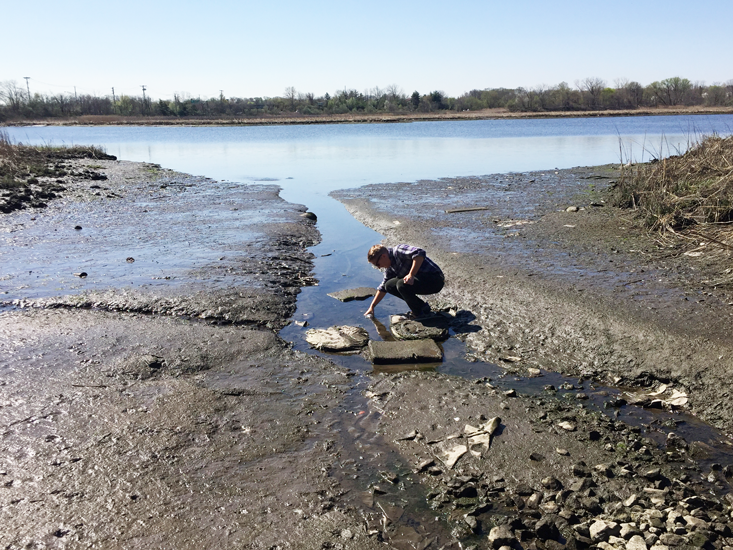
Herodotus attributed this fortunate balance to the benevolence of the gods—as would Plato, in his own, more elaborate theory of cosmic harmony articulated in the Dialogues. Five centuries later, Cicero summed it up nicely: “Everything in the world is marvelously ordered by divine providence and wisdom for the safety and protection of us all … Who cannot wonder at this harmony of things, at this symphony of nature which seems to will the well-being of the world?”
By the 19th century, although Galileo had long since knocked Earth from the center of the universe, the idea of God’s self-regulating clockwork planet was king. Scientists took as their baseline assumption that nature was in balance, even when appearances proved otherwise. In 1864, George Perkins Marsh, considered by many the founding father of American conservationism, wrote that “animal and vegetable life, are subject to change only from geological influences so slow in their operation that the geographical conditions may be regarded as constant and immutable.”
As the industrial revolution left the creator god behind, scientists found a new, robust model for the balance of nature: the finely tuned machine, with its inputs and outputs and replaceable parts. The metaphor changed, but the paradigm remained. In his 1887 essay, “The Lake as Microcosm,” Stephen A. Forbes, a prominent American ecologist, echoed Herodotus when he wrote that “no phenomenon of life … is more remarkable than the steady balance of organic nature, which holds each species within the limits of a uniform average number, year after year, although each one is always doing its best to break across boundaries on every side.” The balance of nature was an equation waiting to be solved.
The natural next step was to define this equation. In the early 1920s, two scientists separately and simultaneously came up with one part of it, now known as the Lotka-Volterra equations, to approximate and explain the continuous interplay of predator and prey populations. The idea was simple: When prey boom, there is more food for the predators, which in turn boom with the bounty, and eat more of the prey, which shrink, and the predators go hungry. And so on, forever. Populations oscillate in elegant and opposing waves.
Around the same time, some ecologists in the field began to grumble against the too-comfortable theory of balance. In 1921, a 21-year-old zoology student at Oxford University named Charles Sutherland Elton was offered a place on the university’s first arctic expedition, to the forlorn island of Spitsbergen (in modern Svalbard), an icy haven for polar bears halfway between the top of Norway and the North Pole. What Elton witnessed there over the course of three summers—namely, the intricate interconnectedness between birds, plants, predators, and the island itself—overturned his preconceived notions of ecology, and inspired his seminal text, Animal Ecology (he would also go on to coin the phrase “food chain”).
In The Pattern of Animal Communities, Elton wrote that, in the complex natural commerce of Spitsbergen, he saw a “very untidy, dynamic, mobile, changing picture of nature rather than a neat physiological arrangement; a world of rather unstable populations in an unstable environment, not a static arrangement of animals limited to habitat created by plants and vegetation with its special microclimates.” In short, instead of a beautifully balanced system of exchange, Elton saw an economy of chance and risk. “The ‘balance of nature’ does not exist, and perhaps never has existed,” he later wrote.
Slowly, the balance-of-nature paradigm fell out of favor. Ecologists realized, after concentrated observation, that many species not only tolerated disturbance in the ecosystem, but thrived upon it—for example, certain tree species needed periodic forest fires to survive. These populations did not fit the Lotka-Volterra equations. Nature was intractably messy.
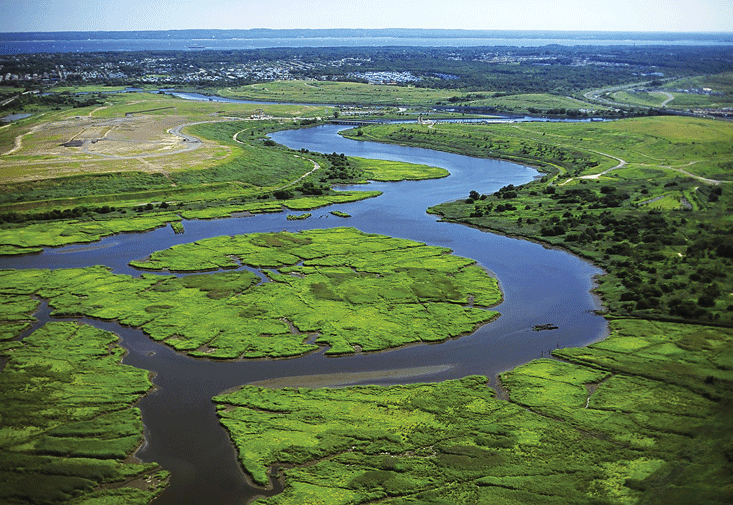
The vanguard against balance-in-nature was led, in part, by an ecologist named Daniel Botkin. As a young man in the 1960s, Botkin had traveled to Isle Royale, a 210-square-mile island in Lake Superior between Ontario and Michigan, to study wolves and moose. The moose had walked to the island over thick ice around 1900. They had no predators on the island, and so, predictably, they multiplied, decimated the foliage, and began to starve. In 1946, wolves were brought in to regulate their numbers, in an attempt to save the moose.
Like any good ecologist of the day, Botkin tried to fit what he saw on Isle Royale into Lotka-Volterra oscillations. But where he sought pattern he found only variation. The populations were indefatigably stochastic. The foremost problem with the Lotka-Volterra equations, Botkin realized, was that they took no account of life’s many vicissitudes and vagaries. The equations made all moose and wolves alike. There were no wounded moose, no senile wolves, no winter storms, no sweeping plagues. As Botkin wrote, “A logistic moose has no fat.”
The island’s ostensibly native plant species seemed no more permanent. Following the last ice age, which ended about 12,000 years ago, the region underwent a series of changes in landscape. First, it was covered in small brush and shrubs, then spruce, then pine, then birch and alder, and then back to pine. All told, the vegetation changed every 1,000 years. Ecologists had long believed that forests evolved from brush and scrub to trees, ending in a permanent “climax” phase, wherein every species, from the redwood to the lichen, had its niche. This no longer seemed to be the case.
Years later, in his book Discordant Harmonies, Botkin wrote, “Wherever we seek to find constancy, we discover change … We find that nature undisturbed is not constant in form, structure, or proportion, but changes at every scale of time and space. The old idea of a static landscape, like a single musical chord sounded forever, must be abandoned, for such a landscape never existed except in our imagination.”
The idea of balance was not just intuitive, it was convenient. Assuming that nature achieves a consistent, stable state without disruption made a return to this state a reasonable ecological goal. Conservationists had something specific to aim for. Now the target was not so clear.
Evidence against the constancy of nature, and for its fickleness, accumulated every year. Even absent human intervention, it seemed, ecosystems did not remain in a stable state for very long—a few thousand years at most. But it was still clear that some ecosystems were more robust, diverse, or stable than others. What were the mechanisms or relationships that distinguished them?
Around the time that Botkin was tracking wolves on Isle Royale, ecologists formulated a new insight into a natural equilibrium. Ecosystems had been thought to regulate themselves from the bottom up—the plants, which made their own food, regulated the creatures that fed on them, and each predatory layer built on the foundation of its prey. In a now seminal 1960 paper, Nelson Hairston Sr., Lawrence Slobodkin, and Fred Smith argued that ecosystems could be built from the top down. They reasoned that if herbivores, like deer or insects, did not eat the world’s green down to nothingness, something must be keeping them in check. This became known as the green world hypothesis or, colloquially, HSS, after its three founders.
A series of experiments backed up the hypothesis. In 1963, a young ecologist named Robert Paine tossed Pisaster starfish out of their cozy tide-pools to see how their absence might change the local ecology. The Pisaster starfish were the dominant predator in the tidepools. When Paine removed them, their prey, mostly Mytilus californianus, the California mussel, proliferated unchecked and began to crowd out other species on the block—chitons, limpets, and barnacles. A few months after Paine began tossing starfish, seven of the 15 species originally at home in the tidepool were gone. The Pisasters, merely by hanging around and eating the mussels, had bolstered the diversity of the entire ecosystem. The experiment quickly became one of the most famous in modern ecology. He called these high-impact top predators “keystone species.”
Perhaps there is a kind of balance to be found—but not forever.
Everywhere ecologists looked, they found keystone species. In the Aleutian Islands of Alaska, Jim Estes discovered that sea otters allowed kelp forests to flourish by eating the kelp-eating sea urchins, which in turn nurtured the survival of a whole host of local species, from fish to eels to cormorants to bald eagles. Paine—who had a knack for pithy neologisms—called these systems “trophic cascades.”
The trophic cascade theory gave conservationists a guide for renewal. Easily the most famous example is the 1995 restoration of the wolf to Yellowstone National Park in the Rocky Mountains. Many ecologists argue the return of the keystone wolf has been a success, helping revive a host of plants and animals in the area, including wildflowers and willow trees, bison and beavers.
Trophic cascade theory suggested ecological order could be disrupted—and potentially restored. But the operation of a healthy ecosystem, resting on a single species, made the idea of permanent balance appear more complex than ever. Over a long timescale, who could say how equilibria might be sustained? In a melancholy 2009 editorial in Science, the restoration ecologist Richard Hobbs wondered, “If natural states are elusive, if environments are always changing, and ecosystems are always coming and going, then the premises underlying ecological restoration … come under question. Does ecological history render ecological reconstruction ‘quaint’?”
The modern ecologist sees nature as a vast web with cause and effect running in every which direction. In 1998, conservation ecologist E.O. Wilson put it this way: “The greatest challenge today, not just in ecology but in all of science, is the accurate and complete description of complex systems.”
Today, many ecologists are trying to unravel those systems. “What we’re trying to understand by modeling the population dynamics of complex networks of interacting species is, under what conditions do you expect to see species persisting and coexisting?” says Jennifer Dunne, the vice president for science at the Santa Fe Institute. “Some may hit some steady state, where they increase to a certain point and then are relatively unchanging over time. Some may immediately drop out—their populations go too low. Disturbances and perturbations are occurring at all scales and altering the course of population dynamics—from someone stepping on a patch of soil all the way up to global climate change.”

Keystone species are not the only ones who can wield an outsized effect. Dunne has shown how including parasites in food webs affects their organization and structure. Meanwhile, her colleague Kevin Lafferty, a marine biologist for the United States Geological Survey, has shown that parasites and infectious diseases may profoundly affect an ecosystem’s stability and robustness—a factor ecologists have largely overlooked for decades.
To the extent that these systems are more or less stable, perhaps there is a kind of balance to be found—but not forever. “Nature does not intrinsically trend toward, and doesn’t long maintain, any kind of ‘tight’ equilibrium, but dynamic, quasi-equilibrial, ‘balances’ are ubiquitous, and although they are not forever, they can last quite a while,” Robert Pringle, a professor of ecology and evolutionary biology at Princeton University, explains in an email. “Whether one sees ‘balance’ in nature is in large measure a function of the temporal scale of one’s outlook.”
How much of these complex models can be successfully translated into real-time conservation policy remains an open question. Alan Hastings, a theoretical ecologist at the University of California, Davis, sees a path forward. “I see a great deal of progression and understanding from a basic scientific level of what can maintain distributions and abundances of species,” Hastings says. “In thinking about conservation, we can use these ideas to manage based on feedbacks, and take actions in response to observations.”
The balance of nature was an equation waiting to be solved.
The mathematical models are best at predicting a range of contingent scenarios that may come to pass, depending on different environmental factors. For instance, if more whales hung around the Bering Sea than usual, how would that affect the population of Alaskan pollack? Or, if sea ice in the Arctic declines as projected, how badly will that impact polar bear populations? (Very badly.) In short, the models are predictive, not prescriptive.
In certain cases, these predictions have helped guide conservation policy. The polar bear model was instrumental in convincing the U.S. Fish and Wildlife Service to classify the polar bear as an endangered species, under the Endangered Species Act, in 2008. Complex computer simulations of marine ecosystems (called EcoSim and EcoPath) have been increasingly adopted (most notably by the Australian government) as official guides in fisheries management. Pringle and his team are combining field experiments, wildlife tracking, molecular diet analysis, and mathematical modeling to understand whether the booming antelope populations in Mozambique’s Gorongosa National Park are creating an ecosystem vulnerable to collapse due to overgrazing and disease. “The picture emerging from this research suggests that missing large carnivores such as leopards, hyenas, and wild dogs need to be brought back, and soon,” Pringle says.
While the models are myriad and sophisticated, their application is murkier. In almost all of these cases, concrete results have yet to be seen. In part, this is a matter of politics—conflicting priorities, bureaucratic drag, limited jurisdiction. But there’s also the fact that complex models don’t yield simple solutions; because these models aren’t prescriptive, they can’t, well, prescribe a cure. As a research paper in Frontiers in Ecology and the Environment put it, “Ultimately, the value of [these] models lies not in prescribing solutions, but in informing and guiding the planning and decision-making process.”
For Field and her colleagues, progress at Freshkills Park is based on data, trial, and error. Which trees attract which birds? What seeds do those birds disperse, adding new layers of vegetation? What do bats or turtles need to thrive? Which species encourage diversity around them, and which flatten it?
Through this all, there is no pretense of rebuilding some original landscape. Steven Handel, an ecologist at Rutgers University and a faculty member at Harvard University’s Graduate School of Design, who has been involved in the Freshkills project since its inception, explained, “We’re not going to make a garden. We’re going to try to rebuild these links of ecological processes to try to bring back native plants.”
For one thing, instead of its original wetlands, Freshkills Park will be mostly grasslands. The choice was utilitarian. Grasslands will help prevent erosion and allow the National Grid power company continued access to the methane coming off the capped landfill. But grasslands will also court a wide range of bird species in the region, and act as a flyway for long-distance migrating birds. The hope is these grasses and birds will set off a cascade effect, bringing in more trees, shrubs, and mammals.
The team began with a mix of local grasses sown to keep the soil in place over the landfill. In 2011, Ed Toth, the director of the Staten Island Greenbelt Native Plant Center, which has provided Freshkills with most of its seeds, designed what he called a “hurry-up mix” of 13 local grass and wildflower seeds (beautiful species like indiangrass, little bluestem, aster, and goldenrod), which have sprouted across the mounds, transforming them into meadows. The U.S. Forest Service then added trees—mostly poplars and willows—as a welcome invitation to the region’s birds, who in turn planted new seed species with their droppings. The hope is that this rich native mix, helped along by human hands, will be well-equipped to combat bully species, like the phragmites. (“The phrag,” Handel says, might have to be conquered by chemical means.) In other words, the ecological tapestry created by the park team will be robust and tightly woven.
Life is now creeping back. As Field was walking through the park, muskrats scuttled through the brush. The endangered grasshopper sparrow has been spotted flitting through the grasses. Ospreys nested on tall wooden poles, and bald eagles soared overhead. Painted turtles have taken up residence in rainwater collection ponds created by the park’s managers. Egrets, cormorants, and heron plucked their way through the creek’s shallows. New York City’s only beavers live right outside the park.
Only time will tell whether the project will succeed. “Our overall goal, from a park perspective, is productive habitat and biodiversity,” Field said. “But it’s also to study the ecological changes that take place during this transformation on a long-term basis. That’s rarely available in any kind of restoration ecology. It gives us an opportunity to see—how does this ecosystem change? And maybe get something that looks a little bit like balance, anyway.”
Madeline Gressel is an assistant editor at Nautilus.

























